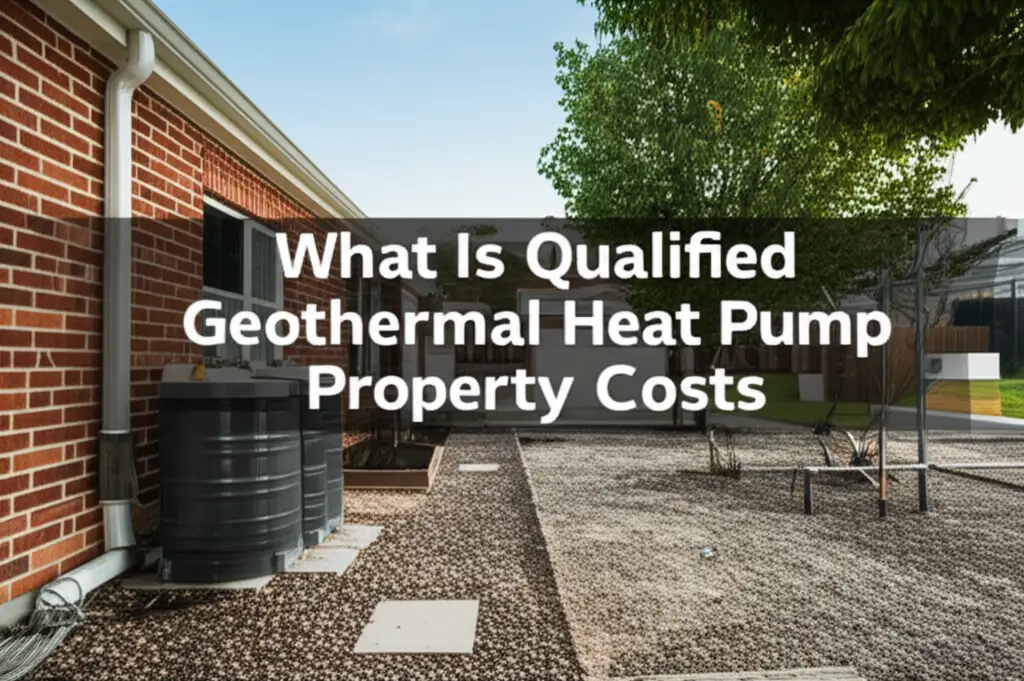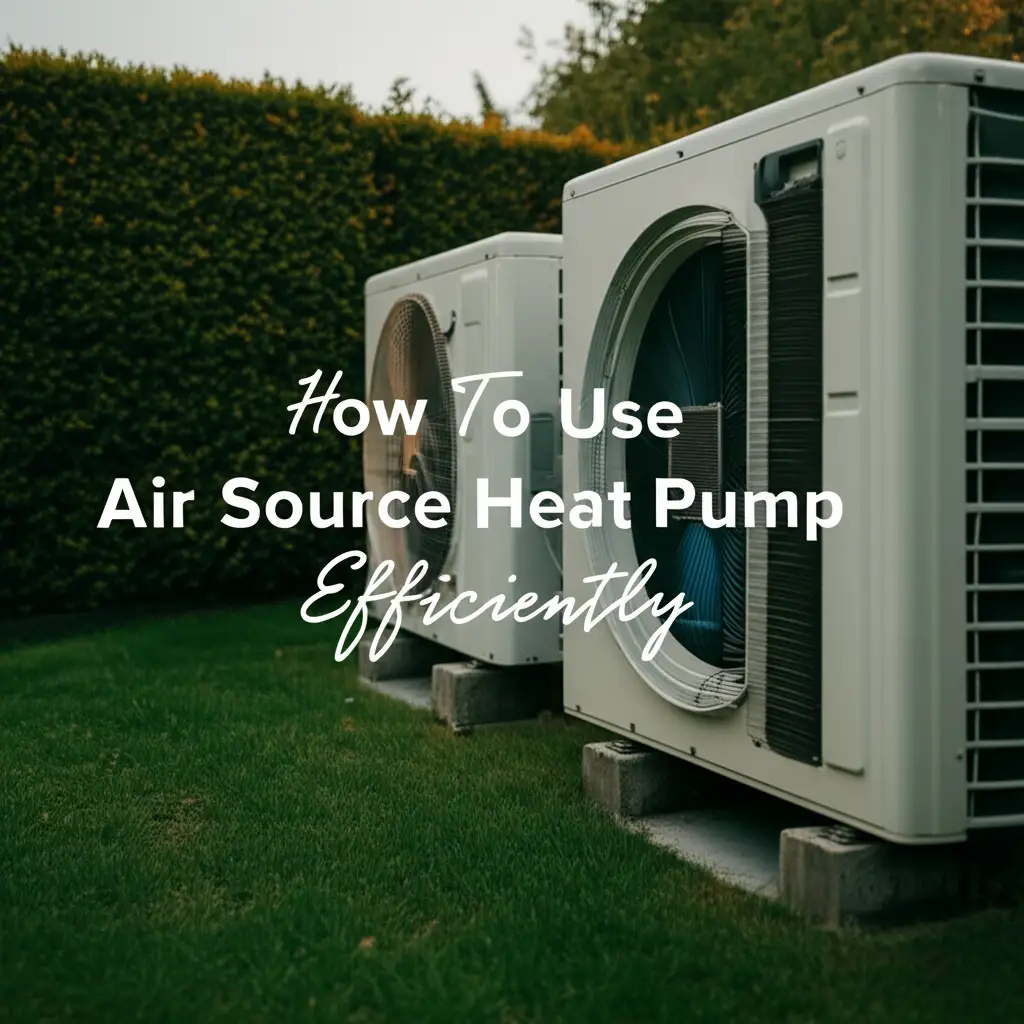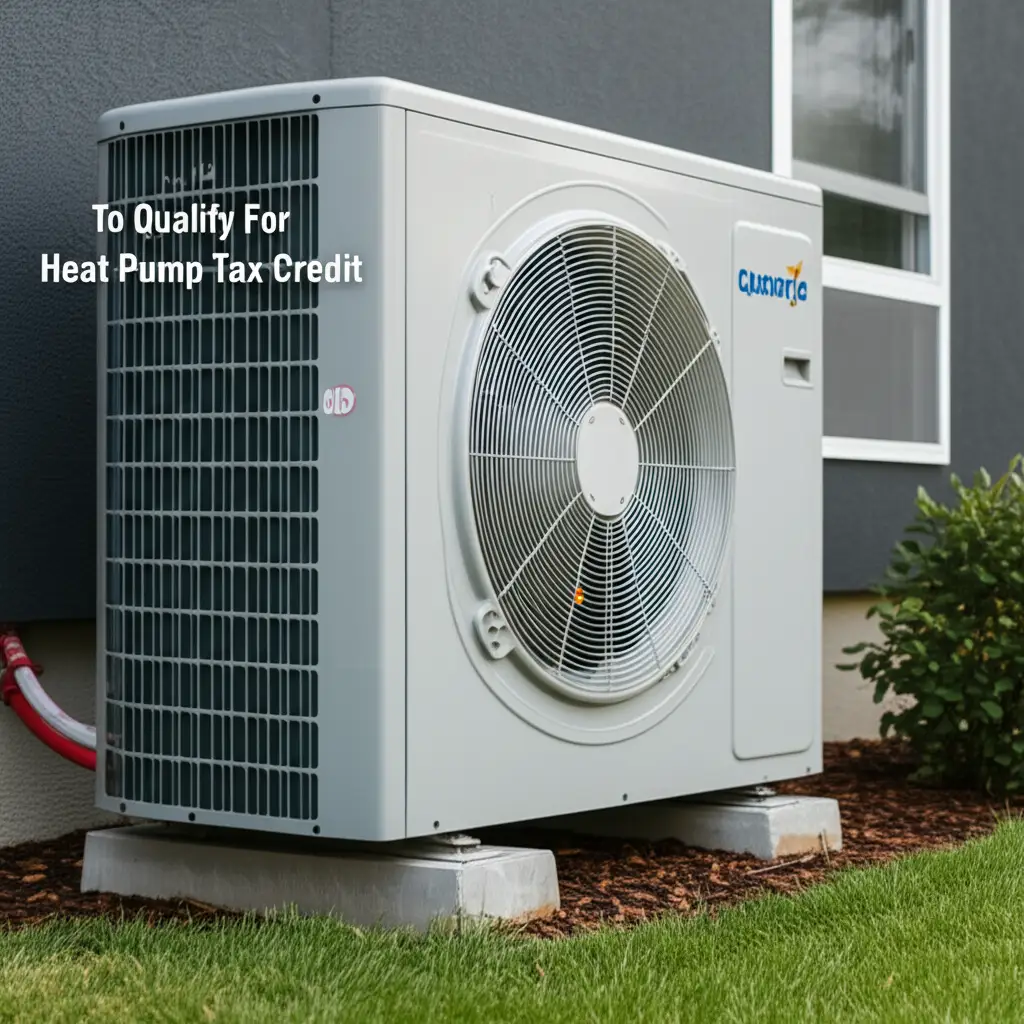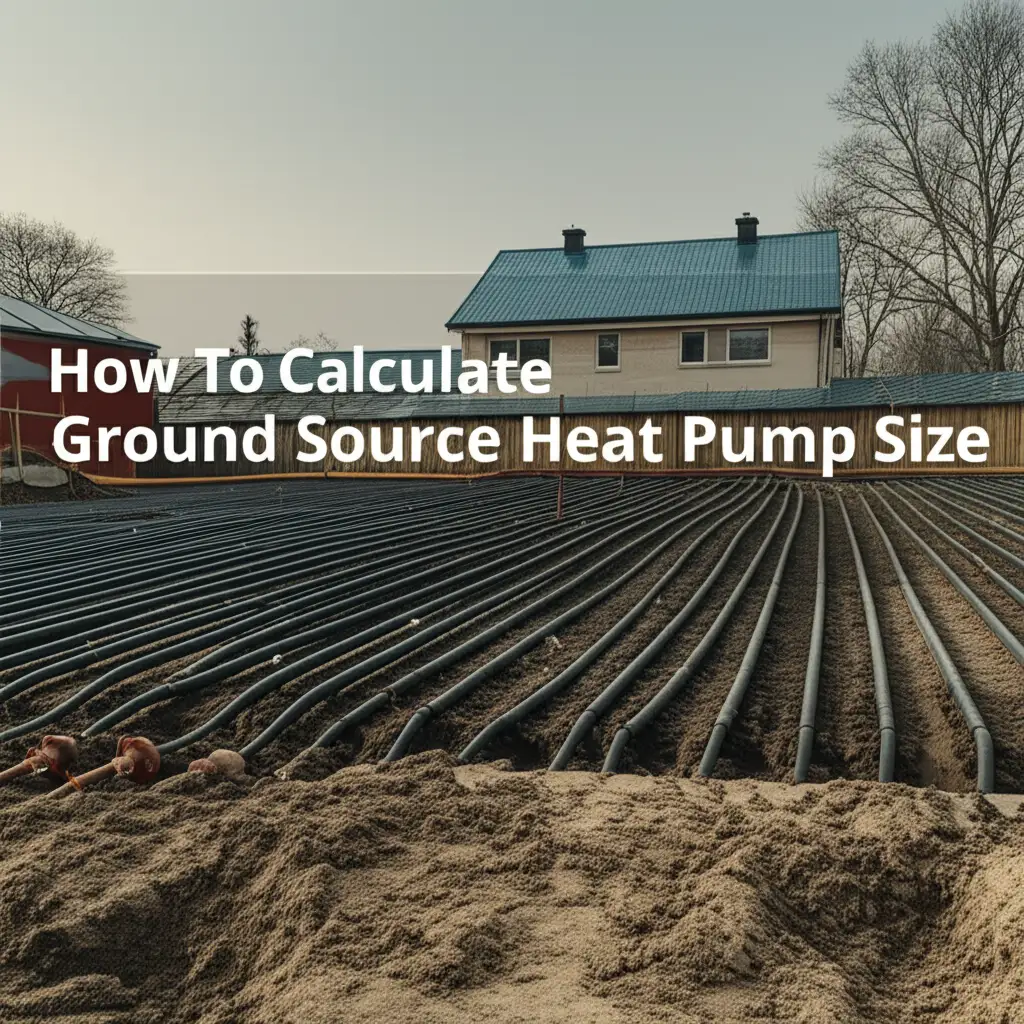· Todd Martin · Energy Efficiency · 17 min read
How Far Can Air Source Heat Pump Be From House
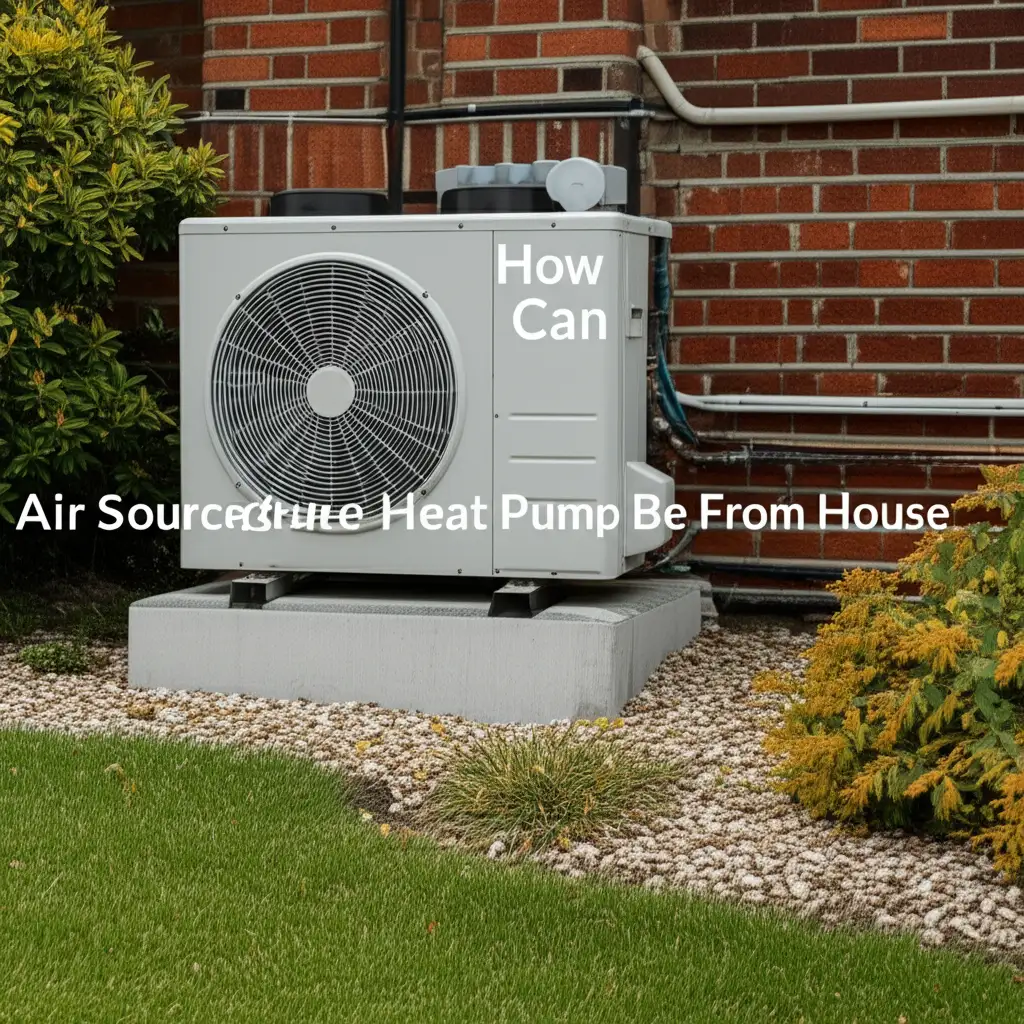
Optimal Air Source Heat Pump Placement: Distance from Your Home
Thinking about upgrading your home heating system? An air source heat pump is a fantastic choice for efficiency and comfort. Many homeowners ask: “How far can an air source heat pump be from the house?” This is a key question during planning. The distance affects everything from installation costs to your system’s long-term performance.
Getting the placement right is crucial for your heat pump. It ensures optimal operation and keeps energy bills low. This article will explore all the factors that influence how far your air source heat pump can be. We will cover technical limits, noise considerations, local regulations, and practical installation tips. Our goal is to help you find the best spot for your heat pump.
Takeaway
- Typical Range: Air source heat pumps generally work best within 15-25 meters (50-80 feet) of your home.
- Efficiency Impact: Longer distances reduce efficiency due to heat loss in refrigerant lines.
- Cost Increase: More piping and labor raise installation costs significantly with distance.
- Noise and Aesthetics: Proximity can lead to noise concerns or aesthetic issues for neighbors and residents.
- Regulations: Local bylaws often dictate minimum setback distances from property lines.
- Maintenance Access: Ensure easy access for regular servicing and cleaning.
An air source heat pump can typically be installed up to 30 meters (about 100 feet) from your house, though 15-25 meters (50-80 feet) is often optimal. This distance is limited by the length of the refrigerant lines, which impact efficiency and installation costs. Beyond this range, heat loss increases, and pump performance can drop significantly.
Understanding Air Source Heat Pump Placement
When you plan to install an air source heat pump, its placement is a critical decision. The outdoor unit needs careful consideration. This unit extracts heat from the outside air, or releases it back into the air for cooling. Its location impacts performance, noise, and your home’s aesthetics.
I often see homeowners focused on hiding the unit. While aesthetics matter, performance comes first. A poorly placed unit can cost you more in energy bills over time. It can also cause issues with local regulations. Getting the distance right from the start avoids future problems.
The primary function of an air source heat pump is to transfer thermal energy. This transfer happens through refrigerant lines connecting the outdoor unit to the indoor unit. These lines are like the arteries of your system. They carry the heat-transferring fluid. The length of these lines directly influences system efficiency.
Think about the balance between convenience and engineering limits. You want the unit out of the way but not so far that it struggles. Each meter of extra piping adds cost and potential for energy loss. We need to consider all these aspects to find the ideal spot.
Key Factors Influencing ASHP Distance
Several technical and practical factors dictate how far an air source heat pump can be from your house. Understanding these limits helps you make an informed decision. I always advise homeowners to consider these points before settling on a spot. Each factor plays a vital role in system performance and cost.
Refrigerant Line Length
The most significant technical limit is the length of the refrigerant lines. These lines carry the refrigerant between the outdoor and indoor units. As the lines get longer, there is more friction and pressure drop. This forces the compressor to work harder, using more electricity. Longer lines also mean more surface area for heat loss or gain. This reduces overall system efficiency. Most manufacturers specify a maximum recommended line length, often around 30 meters (100 feet). Exceeding this can void warranties or severely impact performance. Professional installers calculate the ideal line length for your specific unit. They ensure it stays within manufacturer guidelines.
Noise Considerations
Air source heat pumps produce some noise during operation. Modern units are much quieter than older models, but they still emit sound. This sound comes from the fan and the compressor. Placing the unit too close to windows or outdoor living areas can be bothersome. It can also disturb your neighbors. Local regulations often have noise ordinances that dictate acceptable decibel levels at property boundaries. You might need to place the unit further away to comply with these rules. This is especially true in densely populated areas. Consider how the sound might travel, reflecting off walls or fences. Think about placing it on a solid, level surface to minimize vibrations and noise. Placing an air source heat pump on the front of your house might be an option, but you will need to consider noise carefully. Read more about this in our guide on Can You Put An Air Source Heat Pump On Front Of House.
Airflow and Clearance
The outdoor unit of an air source heat pump needs proper airflow. It pulls in air to extract heat and expels colder air (or warmer air in cooling mode). Obstructions around the unit can restrict airflow. This makes the heat pump less efficient. It can also cause it to work harder and shorten its lifespan. You need to maintain minimum clearances around the unit. This includes distance from walls, fences, and dense vegetation. Check the manufacturer’s recommendations for specific clearance requirements. Generally, aim for at least 30-60 cm (1-2 feet) of clear space on all sides. This ensures the unit can breathe properly. Good airflow is essential for the unit to perform at its best.
Maintenance Access
Regardless of how far your air source heat pump is from your house, easy access for maintenance is critical. The unit needs regular servicing to function optimally. This includes cleaning coils, checking refrigerant levels, and inspecting components. If the unit is difficult to reach, maintenance might be neglected. This can lead to decreased efficiency and potential breakdowns. Ensure there is enough space for technicians to work around the unit safely. My experience shows that easy access saves time and money on service calls. It also helps your unit last longer. Learn more about regular servicing in our article: How Often Do You Need To Service An Air Source Heat Pump.
Efficiency and Performance: The Impact of Distance
The distance an air source heat pump is from your house directly impacts its efficiency and overall performance. Every foot of refrigerant line matters. It is a critical consideration for your energy bills. I always emphasize this point to homeowners. You invest in a heat pump for its efficiency; you want to get the most out of it.
Longer refrigerant lines mean more surface area. This allows more heat exchange with the surrounding environment. In heating mode, the hot refrigerant loses heat to the cooler ground or air as it travels. In cooling mode, the cold refrigerant gains heat. This “thermal transfer” reduces the amount of heating or cooling delivered to your home. It forces the system to work harder to compensate. This phenomenon is called line loss.
The pressure drop within longer lines also plays a role. Refrigerant needs to be compressed to move through the system. A longer line increases resistance. This means the compressor must expend more energy to push the refrigerant. An overworked compressor consumes more electricity. This leads to higher operating costs. This is one reason why an air source heat pump might use so much electricity if not installed correctly. You can read more about this in our article: Why Is My Air Source Heat Pump Using So Much Electricity.
Optimal efficiency is achieved when the line length is minimized. Most manufacturers design their systems for best performance within specific line length ranges. Going beyond these ranges will reduce the Coefficient of Performance (COP) and Seasonal Coefficient of Performance (SCOP) for heating. It also affects the Seasonal Energy Efficiency Ratio (SEER) for cooling. A lower COP or SEER means you pay more for the same amount of heat or cool. Thus, while placing the unit further away might seem convenient, it could be a costly decision over the system’s lifespan.
Navigating Regulations and Local Bylaws for Placement
Before finalizing the spot for your air source heat pump, it is essential to check local regulations and bylaws. These rules vary significantly by location. They often dictate specific requirements for outdoor equipment. Ignoring these can lead to fines or demands to relocate your unit. I always tell clients to check with their local planning department first. It prevents headaches down the line.
Many municipalities have zoning ordinances. These ordinances specify setback distances. A setback distance is the minimum distance a structure or equipment must be from property lines. This rule aims to maintain property values, ensure neighbor privacy, and control noise pollution. Your heat pump’s outdoor unit might fall under these rules. The required setback could be anywhere from a few feet to several meters. This directly impacts how far your unit can be from your home’s side or rear boundary.
Noise pollution is a common concern. Local councils often have noise ordinances that limit decibel levels. These limits apply especially during evening and nighttime hours. An air source heat pump operating close to a neighbor’s window could exceed these limits. Placing the unit further away from property lines helps mitigate this risk. Some areas may require a noise assessment for certain installations.
Aesthetic considerations also sometimes feature in local rules. Historic districts or areas with strict homeowner association rules might have guidelines on visible outdoor equipment. You might be restricted from placing the unit in highly visible areas. This could push the unit further away or closer to your house depending on your property layout. For instance, putting a heat pump on your roof might be an option in some areas, but building codes would need to be checked. You can read more about this in our guide: Can I Install An Air Source Heat Pump On My Roof.
Building codes also come into play. They ensure safety during installation and operation. For example, some codes require specific clearances from gas meters or electrical panels. These are safety requirements to prevent hazards. Always confirm with a qualified installer or your local authority. They can provide the most current and relevant information for your specific address.
Cost Implications of Heat Pump Distance
The distance an air source heat pump is from your house directly impacts the overall installation cost. It is one of the primary variables that can significantly increase your budget. Many homeowners overlook this factor during their initial planning. I’ve seen projects go over budget because of unexpected piping requirements. Longer distances mean more materials and labor.
The main cost drivers related to distance are:
- Refrigerant Line Materials: Longer distances require more copper piping and insulation. Copper is a costly material. The more feet you need, the higher the material expense. Proper insulation is also crucial to prevent heat loss, adding to the material cost.
- Electrical Wiring: The outdoor unit needs power from your electrical panel. A longer distance means more electrical cable. This cable must be correctly sized and installed to handle the unit’s power requirements safely. Trenching may be needed if wiring runs underground.
- Condensate Drain Lines: Air source heat pumps produce condensate, especially in cooling mode. This water needs a drain. A longer distance means more PVC piping for the drain line. This line also needs to be sloped correctly to ensure gravity drainage.
- Labor Costs: Installation time increases with distance. Running longer lines, wiring, and drain pipes takes more time. Digging trenches for underground lines also adds significant labor hours. Installers charge by the hour, so more time means a higher bill.
- Permits and Inspections: Some jurisdictions may require additional permits or inspections for longer runs or complex installations. This can add to the administrative cost of the project.
While a few extra feet might seem minor, these costs add up quickly. A good installer will provide a detailed quote showing these expenses. It is always best to find the closest suitable location to minimize these costs. Sometimes, the initial savings on a short-distance installation can offset slightly higher equipment costs. This makes the overall project more affordable.
Optimal Siting Strategies and Installation Tips
Finding the optimal site for your air source heat pump balances many factors. It’s not just about how far it can be from the house. It is also about ensuring efficiency, longevity, and minimal disturbance. I guide homeowners through these considerations to achieve the best results. A well-planned installation pays dividends over the system’s life.
Here are key strategies and tips for optimal air source heat pump placement:
- Prioritize Proximity: Aim for the shortest possible refrigerant line run that still meets other requirements. This maximizes efficiency and minimizes installation costs. A distance of 3-15 meters (10-50 feet) is often ideal.
- Minimize Noise Impact: Locate the unit away from bedrooms, living areas, and neighbor’s windows. Consider using a solid concrete pad for the unit. This helps absorb vibrations. Planting sound-absorbing shrubs around the unit can also help, but ensure they do not restrict airflow.
- Ensure Adequate Airflow: Always adhere to manufacturer-specified clearances. Avoid placing the unit in enclosed spaces, small alcoves, or directly against walls without proper spacing. Do not block the fan’s intake or exhaust. Remember, an air source heat pump does not need to be in direct sun to work, so finding a shaded spot is not an issue. More details can be found here: Does An Air Source Heat Pump Need To Be In The Sun.
- Account for Condensate Drainage: The outdoor unit will produce water. Plan for a clear path for this water to drain away. It should not pool near your foundation or create icy patches in winter. Connect it to a proper drain if possible, or ensure it drains onto a permeable surface away from the house.
- Protect from Elements (but not enclose): While heat pumps are designed for outdoor use, protecting them from direct falling snow or ice can improve performance. A small, open-sided cover can help. However, never fully enclose the unit, as this will restrict airflow.
- Consider Future Access and Maintenance: Ensure technicians can easily reach all sides of the unit. Clear pathways around the unit are essential. This makes routine servicing and potential repairs straightforward. This also applies to the internal components.
- Aesthetics and Curb Appeal: Integrate the unit as discreetly as possible into your landscaping. Use strategic planting or non-obstructing screens to hide it from view. Avoid placing it prominently in front of the house unless absolutely necessary and permitted.
- Professional Consultation: Always consult with a qualified HVAC professional. They can assess your property. They can recommend the best location based on your home’s layout, local climate, and specific heat pump model. They ensure compliance with all codes and manufacturer guidelines.
Common Challenges and Solutions for ASHP Placement
Even with careful planning, challenges can arise when placing an air source heat pump. Understanding these common hurdles and their solutions helps ensure a smooth installation. I’ve encountered many unique situations, and most have practical answers. The key is identifying potential problems early on.
Challenge 1: Limited Space
Many urban or suburban homes have small yards. This limits placement options. You might struggle to meet setback requirements or maintain adequate airflow clearances.
Solution: Explore alternative mounting options. A wall-mounted bracket can lift the unit off the ground. This frees up space and keeps it away from foot traffic. If ground space is truly minimal, consider a smaller, more compact unit. Some units are designed for tighter spaces. Ensure that wall mounting allows for vibration dampening to prevent noise transfer into the house.
Challenge 2: Noise Concerns
Neighbors or family members might be sensitive to noise. Even quiet heat pumps can cause disturbance if too close to windows or outdoor living areas.
Solution: Place the unit as far as practical from sensitive areas, within efficiency limits. Use noise-reducing accessories like sound blankets or vibration-dampening pads. Plant dense evergreen shrubs between the unit and your neighbor’s property line. These can help absorb sound. You can also strategically place solid fences or walls, ensuring they don’t block airflow.
Challenge 3: Aesthetic Impact
A large outdoor unit can be an eyesore. It might detract from your home’s curb appeal or block views.
Solution: Integrate the unit into your landscaping. Use decorative screens or trellises to conceal it. Ensure any screening allows for free airflow and easy maintenance access. Choose a unit color that blends with your home’s exterior. Sometimes, finding a less visible side of the house, even if it adds a few feet to the line length, is worth the aesthetic benefit.
Challenge 4: Drainage Issues
The condensate drain line needs a continuous downward slope. This can be difficult on uneven terrain or if the ideal spot is far from a convenient drain point.
Solution: Install a condensate pump if gravity drainage isn’t possible. This pump moves the water uphill or over longer distances to a suitable drain. Ensure the pump is sized correctly for your unit’s condensate production. Alternatively, explore options for routing the drain line to a nearby French drain or a permeable landscaped area, far enough from the foundation.
Challenge 5: Existing Utilities
You must avoid existing underground utilities like water pipes, gas lines, or electrical cables. Digging trenches for refrigerant lines or electrical conduit can damage these.
Solution: Always call utility locators before any excavation. In the US, this is typically “811” or your local equivalent. Have a clear understanding of where all buried lines are. Plan your trenches to avoid them completely. Sometimes, overhead routing for electrical or refrigerant lines might be a safer option if underground routes are too risky.
FAQ Section
Is there a minimum distance an ASHP needs from the house?
Yes, generally. Manufacturers recommend at least 15-30 cm (6-12 inches) from the house wall to allow for proper airflow and maintenance access. Additionally, local building codes or noise ordinances may require specific setback distances from property lines, which can indirectly affect the minimum distance from your house itself.
Does heat pump distance affect efficiency?
Yes, the distance significantly affects efficiency. Longer refrigerant lines lead to increased heat loss or gain, depending on the season, and greater pressure drop. This forces the compressor to work harder, consuming more electricity. Keeping the unit closer to the house minimizes these losses and maximizes the system’s efficiency (COP/SEER).
What are the noise concerns for a far-away heat pump?
While a far-away heat pump might reduce noise inside your home, its noise can still be a concern for neighbors. Sound travels, and some local regulations have strict noise limits at property boundaries. Even if far from your house, ensure it complies with local noise ordinances to avoid neighbor complaints or legal issues.
Can I install my ASHP far from my existing pipes?
You can install an ASHP further from existing pipes, but it will increase installation costs. Longer refrigerant lines, electrical wiring, and condensate drain lines will be needed. These added materials and labor significantly raise the overall price. It also slightly reduces system efficiency due to heat loss in longer pipes.
How much does extra piping for a heat pump cost?
The cost of extra piping for a heat pump varies. Copper refrigerant lines, insulation, and labor for each additional foot can add substantially to the total. You might expect to pay an extra $50-$100 or more per foot beyond standard lengths, depending on material costs and labor rates in your area.
Are there regulations on how far a heat pump can be?
Yes, local planning departments and homeowners associations often have regulations. These include minimum setback requirements from property lines. They also specify noise limits. These rules may indirectly dictate how far your heat pump can be from your house. Always check with your local authorities before installation.
Conclusion
Determining “how far can an air source heat pump be from the house” is a multifaceted decision. It balances technical constraints, performance efficiency, cost, and practical considerations. While an air source heat pump can theoretically operate at distances up to 30 meters (100 feet), the optimal range is typically much closer, around 15-25 meters (50-80 feet). This shorter distance ensures maximum energy efficiency and minimizes installation expenses.
We have explored the vital factors influencing this distance. These include refrigerant line length, potential noise impact, the need for adequate airflow, and critical access for maintenance. We also discussed the significant effect of distance on your system’s efficiency and overall installation costs. Navigating local regulations and bylaws is another crucial step to avoid future complications.
My advice remains consistent: aim for the shortest practical distance for your air source heat pump. This approach provides the best balance of efficiency, cost, and long-term reliability. Always consult with a qualified HVAC professional. They can assess your specific property. They can recommend the most suitable placement for your air source heat pump. This ensures your home heating system performs optimally for years to come. Invest in professional planning to maximize your heat pump’s benefits and ensure comfort in your home.
- air source heat pump distance
- heat pump placement
- ASHP efficiency
- noise considerations
- refrigerant line length
- installation cost


